History is full of great conversion narratives. Saint Paul on his way to Damascus. Brett Favre on his way to Minnesota. Me on my way to a specialty Chicago tackle shop to pick up my first fly rod.
The year was 1999, I was 19 years old, and I’d never seen any fly gear up close. Nor had I ever glimpsed a trout or salmon that wasn’t gutted on ice in the grocery store. But that isn’t to say I wasn’t an angler. Far from it. I was, in fact, the direst sort of warm-water, gear-fishing junkie. I’d caught sturgeon larger than myself and knew the pleasure of fighting pike so large they towed your canoe. Due to an obsession with bass my left thumb was absent a patch of epidermis from roughly April through October. Pluck any school notebook at random from my backpack and you’d behold it was almost entirely devoted to new catfish rigs, including some of the most elaborate paternosters the world has ever seen. But when on that fateful day I busted my kit combo of rod, reel, and line out of its shrink-wrapped package, it was the first time I’d touched the cork of a fly rod.
So what possessed me to give the sport a whirl? I’m not entirely sure. It's true that I loved to fish and was always looking for new species to chase and new techniques to learn. But it was also the case that I’d fallen into a sort of fishing rut. In the months leading up to buying that fly rod I’d found myself wanting more from my time on the water, but more of what exactly I couldn’t say. Challenge? Poetry? Only time and my kit combo would tell.
Though I had the highest hopes for my new tool, all optimism went out the window the first time I took it down to the bass pond by my house. Suddenly the guy who could vertical-jig for walleyes with rods in each hand and a foot on the trolling motor could barely get his offering out of the grass and into the water. Despite decades of conventional fishing, I just couldn’t intuit the mechanics of the fly cast. Even worse, all the old muscle memory that had served me so well when bombing out spinnerbaits to weed edges or pitching jigs to docks suddenly felt like a hindrance. And so rather than a new world of fishing riches, all that first fly rod granted access to was a fresh universe of obstacles. This was not at all what I signed up for. Where, I wondered, was the sport of grace promised by the guys on TV?
Looking for answers, I dug deep into the available literature, but was only left with more questions, many of them utterly ridiculous in restrospect. Could something called a streamer also work in still water? How dead did a dead-drifted fly need to be to take a trout? And what on earth was a swung fly?
As if all these challenges weren’t enough, after a decade of walking into tackle shops and being able to tell, with a quick glance at a given lure's shape, material, and weight, how wide it might wobble or how fast it might sink, I now found myself staring at the offerings in fly shops with no clue what they did. Which flies were easy to cast? What were the materials in this one? How did this fly fish differently from that one? Looking back, it’s almost hard to believe how clueless I was.
That, of course was a long time ago. But then two years ago something happened that got me thinking back to that cluelessness nube in the fly shop again. I was attending a talk at the University of Michigan, where I work as a writing instructor. The talk was devoted to a revolutionary new way of teaching a second language. It turns out that the immersion-method that had been popular for decades was not the most efficient way to teach a new language. Far more effective, it turns out, was using the learner’s first language strategically in the classroom. Rather than asking students to leave their first language at the door, the new pedagogy invited them to bring it inside.
As I sat there listening, I realized that part of what had made fly fishing difficult to learn back in the day was that I had been asked to check my gear fishing experience at the door. The immersion world of fly fishing made me feel like I was starting from scratch, even though I’d been fishing my whole life. I wondered: with a different approach, could my transition have been made easier? Was there a way of working through the gear angler’s existing skill and knowledge base to translate and transfer their pre-existing knowledge bases and skill-sets, rather than asking them to learn a new sport from scratch. I thought there was. When I picked up the phone and ran the idea by Tom Rosenbauer at Orvis, he agreed.
So I wrote a book that I believe does just that.
Fine and good, you’re probably wondering. But why are you telling me this? I already know how to fly fish. To which I’d say, Sure, that may be true, but you probably have a potential fly fishing convert in your life. Someone who likes to fish just a little too much. Someone always just a little too curious about your most recent trip. I’m talking about your niece or nephew who’s the first one up in the morning on a fishing weekend, already fishing off the dock while everyone else is just waking up. Or your co-worker who lingers too long at your desk, asking again about what it feels like when a brown trout blows up on your mouse in the pitch dark. There’s nothing our sport needs more than new blood—the slew of depression-inducing attacks on our most coveted natural resources affirms that. And there’s no better place to find it than among the 38 million folks who already fish in this country (by contrast, fly anglers number just under 4 million).
If you do snag this book as a gift for a gear-angling friend or family member, hand it over with a warning: that they will end up fishing more. More creatively, more attentively, more deliberately. Disregarding total days and hours on the water, the one thing that defines fly anglers is a desire to get more from their experience on the water. And in the end, that’s why I wrote this book: because I truly and deeply believe that there is no better place to be than on the water, fly rod in hand.
Editor's note: You can find Dave's book, From Lure to Fly: Fly Fishing for Spinning and Baitcast Anglers, on Amazon.















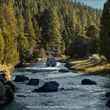
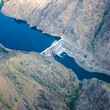



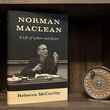
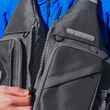



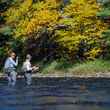

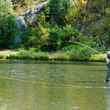
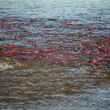
Comments